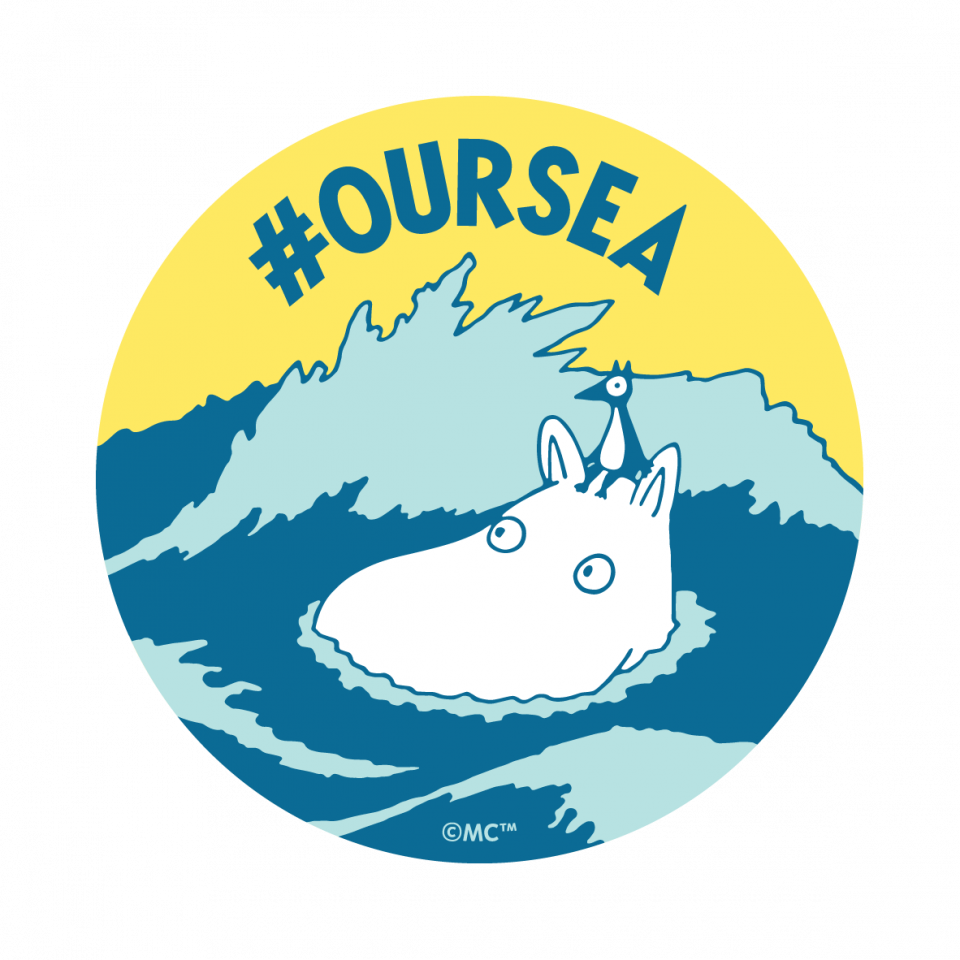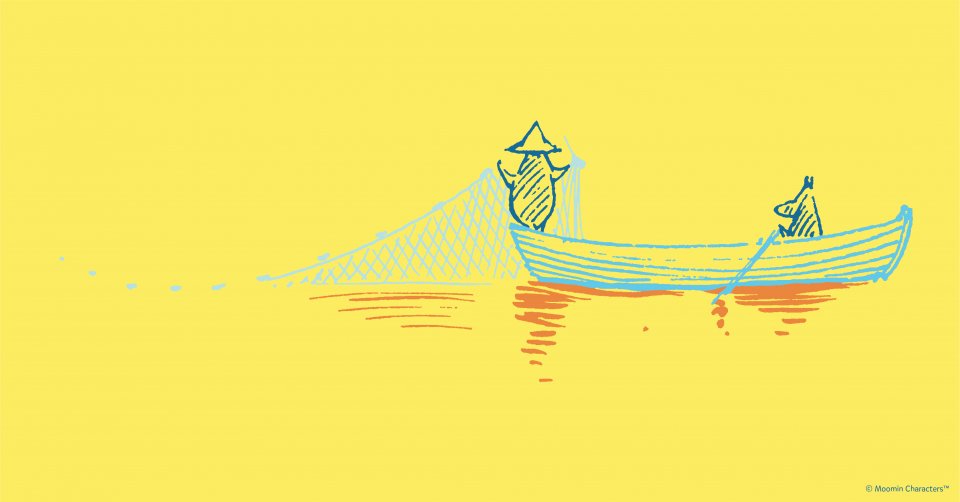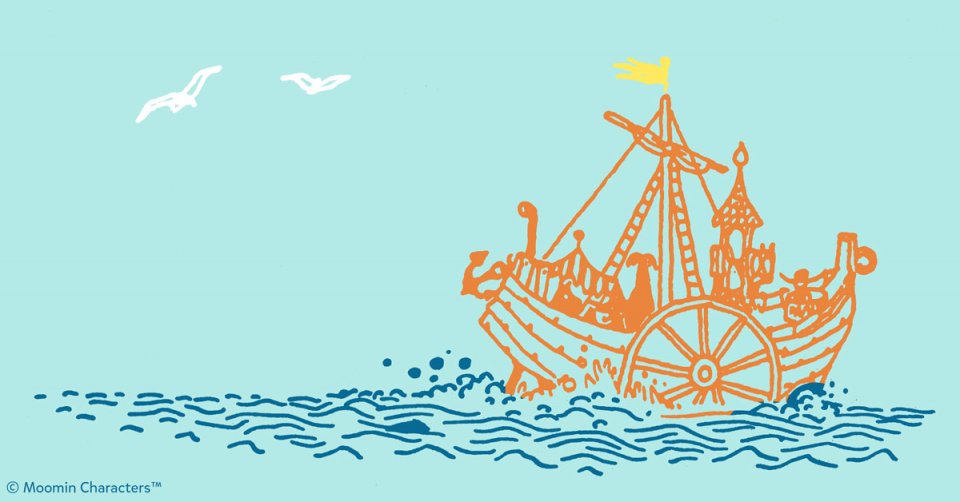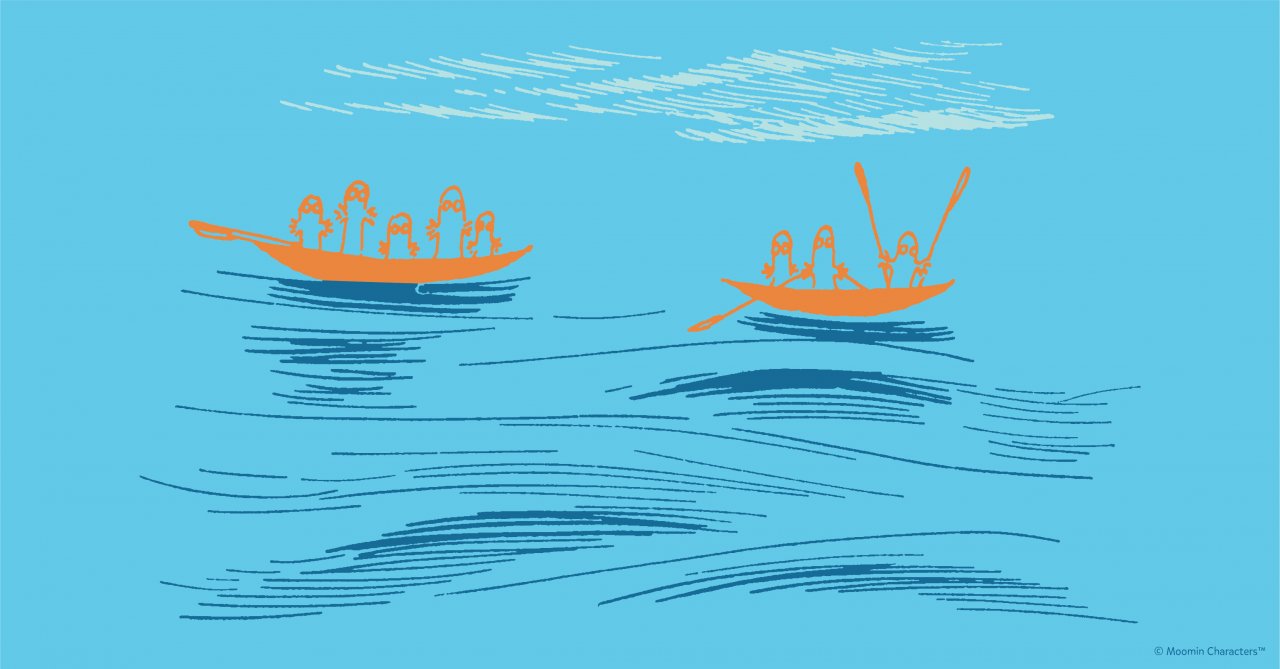In those days they lived together with the house-trolls in people’s houses, mostly behind their tall stoves.
“Some of us still live there now, I’m sure,” said Moominmamma.
“But only where people still have stoves, I mean. We’re not happy with central heating.”
“Did the people know we were there?” asked Moomintroll.
“Some did,” said his mother.“
They felt us mostly as a cold draught on the back of their necks sometimes – when they were alone.
- Moomins and the Great Flood, 1945
In her first Moomin story, Tove Jansson describes the origins of Moomintrolls as well as their fondness of tile stoves. In Moominvalley there were no electrical heaters whatsoever, one would instead warm up the house by firing up tile stoves, given that they weren’t being occupied by an ancestor. You see, in the beginning of time moomintrolls used to live behind tile stoves, which is why it pays off to make sure that no one is occupying your tilestove before firing it up. This year marks 75 years since the publishing of the first Moomin story, in honor of the anniversary Moomin Characters is collecting funds to clean up the Baltic Sea – the sea that inspired Tove Jansson in writing several Moomin stories.
A good way to help the Baltic Sea is by choosing renewable sources of energy

Energy production is one of the most significant sectors when it comes to emitting greenhouse gases, making it a big contributor to global warming. Meanwhile, the species living in the Baltic Sea are struggling to adapt to the warmer temperatures since they are used to living in cold water. Adding to this, global warming is foreseen to bring an increase in rainfall around the shores of the Baltic Sea. Heavier rainfall means that the amount of nutrient load being released into the sea from the surrounding land areas will increase. Therefore, by choosing renewable energy and by purchasing green electricity, you are also helping the Baltic Sea.
Moominvalley’s unconventional form of electricity
However, there was certainly electricity in Moominvalley – it only adapted a more unconventional form: self-illuminating and oblong, like a walking sock with feet. The phenomenon in question is of course the Hattifatteners. Moominpappa describes his first encounter with these electrical herd animals in his memoirs, and he even dreams of running away with them to share their “wicked life”:
In that moment I caught sight of a whole flotilla of small boats putting out to sea. Light as butterflies, they went gliding away over their own reflections. All were manned by a silent crew: little grey-white beings huddling close together and staring out towards the horizon
“Hattifatteners,” Hodgkins said. “Sailing by electricity.”
“Hattifatteners,” I whispered excitedly. “Travelling and travelling and never getting there . . .”
“Thunderstorms charge them,” Hodgkins said. “And they sting like nettles.”
“A wicked life?” I repeated with interest. “How?”
“I don’t quite know,” said the Joxter. “Trampling down people’s gardens and drinking beer, and so on, I suppose.”
We sat there for a long time looking after the Hattifatteners sailing out towards the horizon. I felt a strange desire to join them on their voyage and to share their wicked life. But I didn’t say anything about it.
– The Memoirs of Moominpappa (First published in Swedish in 1950)
However, the stories don’t tell of anyone ever using them as a source for heating – except for one particular tv-animation where Little My uses a Hattifattener as a battery to power a flashlight – but that is a completely different story.
The Moomin community to the rescue of the polluted sea
2020 marks the 75th anniversary of Tove Jansson publishing her first Moomin novel. To celebrate the anniversary Moomin Characters Ltd has launched the one-and-a-half-year-long #OURSEA campaign in collaboration with the John Nurminen Foundation.

The goal of the campaign is to collect one million euros for John Nurminen Foundation’s work to save the Baltic Sea and its heritage for future generations. A donation of 10€ can remove 40 kg of blue-green algae from the Baltic Sea. To take part in the campaign you can make a direct donation via www.oursea.fi, buy a campaign product, learn more about the sea, the challenges it faces and solutions needed to help improve the situation, as well as influence your friends, family, colleagues and politicians to take action.
On the website you can follow how the campaign counter works its way up to the campaign’s goal of one million euros.

Help the Baltic Sea by eating local fish!
Here are some new OURSEA campaign tips: eating local fish helps the Baltic Sea by reducing the amount of nutrients that overload the sea.

For Moominous adventures – choose environmentally friendly fuels and vehicles!
The Moomin family loved boating, and used boats for fishing trips as well as longer journeys, in hope of great adventures.

